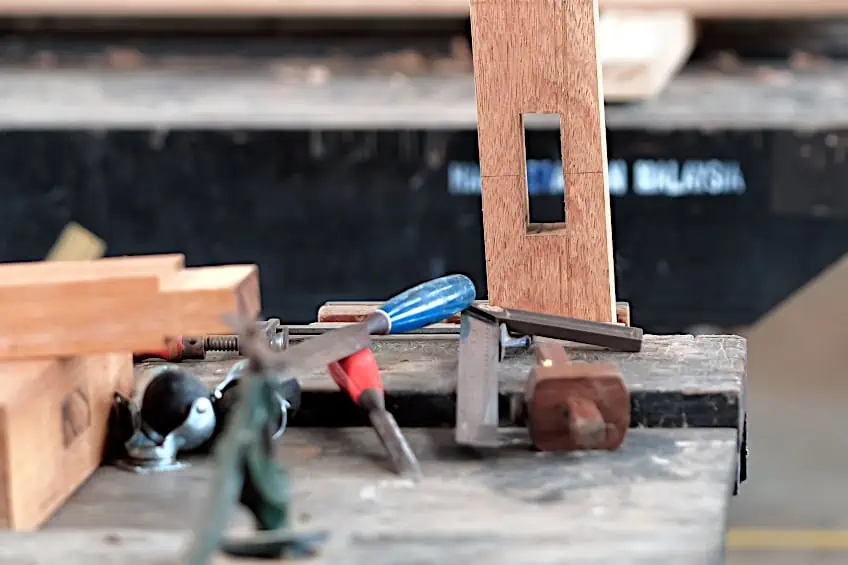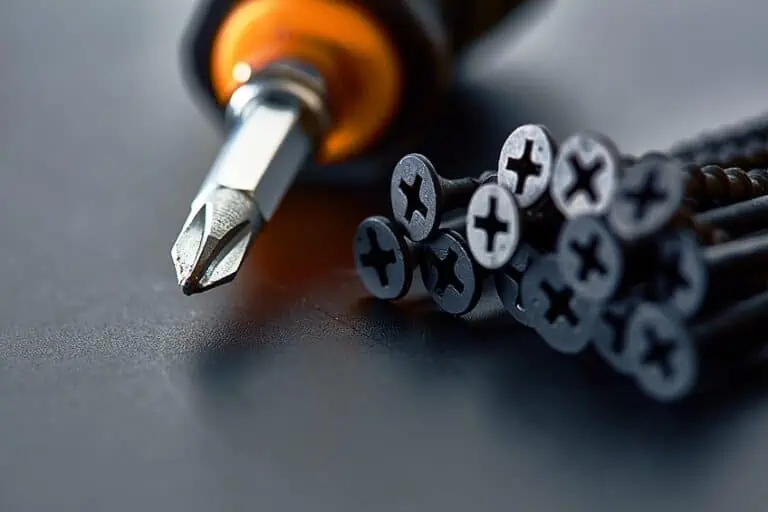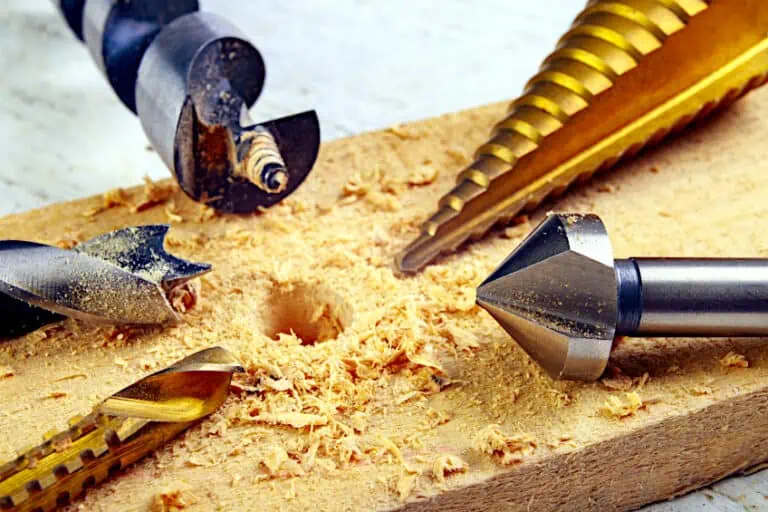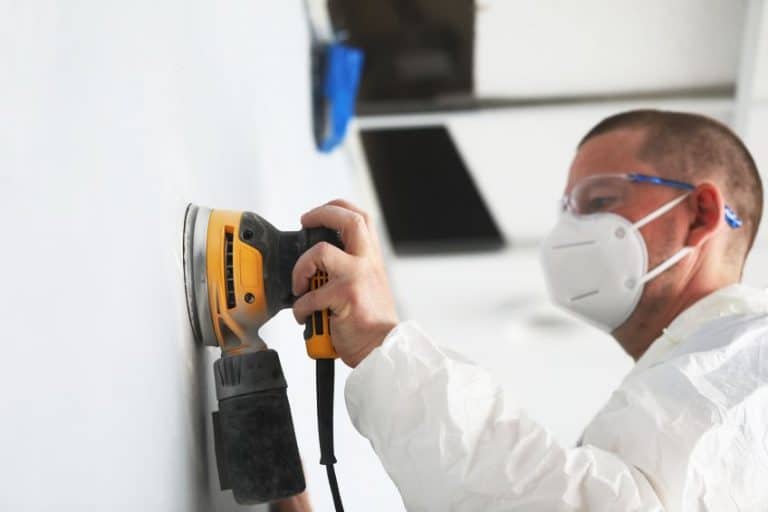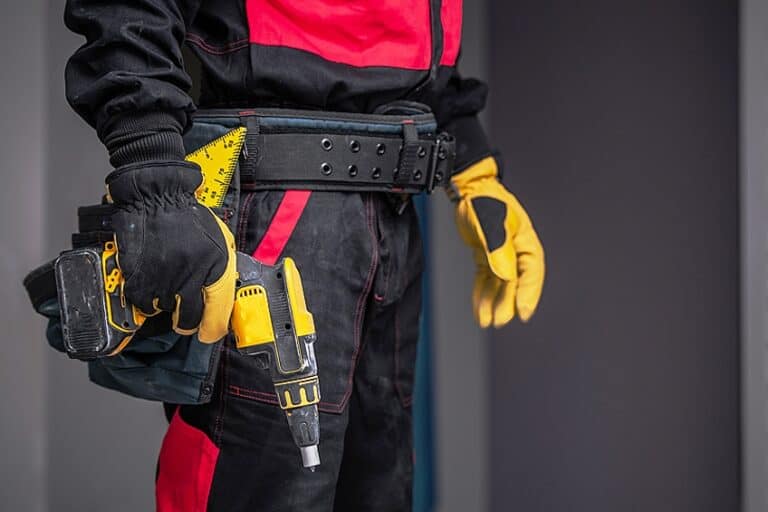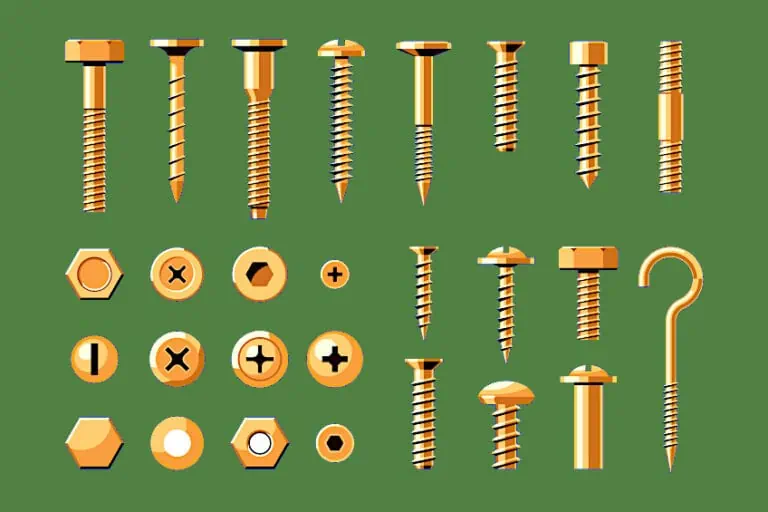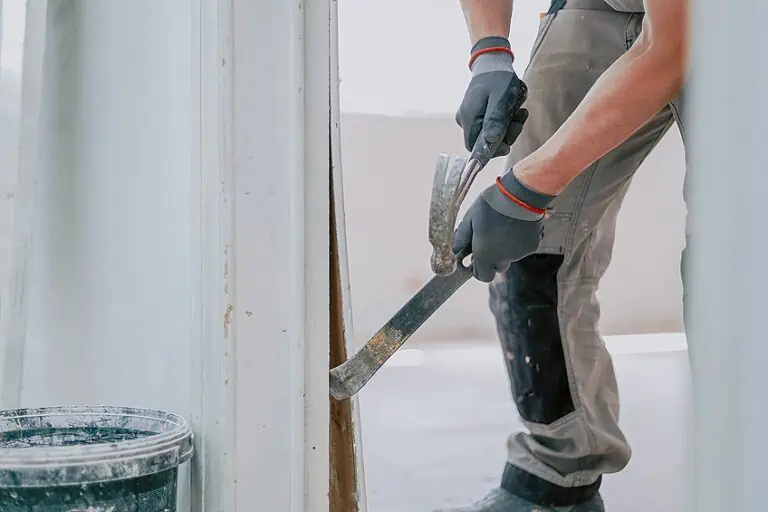How to Cut Square Holes in Wood – Mortise and Fretwork Tips
Whether you’re new to woodworking or a seasoned professional, there will be times when a project tests the limits of your skills and patience. This can come in the form of joinery, fastening one board to another, treating, painting, or most commonly, cutting. One of the most challenging things to do in woodworking is cutting holes in specific shapes, especially if you don’t have tools specifically designed for the task. Squares can be particularly challenging to cut, so we thought we’d have a look at how to cut square holes in wood, what you will need, and what the best way to go about it is.
Table of Contents
Why Would You Want to Cut Square Holes in Wood?
Making square holes in wood seems a bit redundant at first. After all, most of the tools designed for woodwork are designed to cut round holes, so why would you need to cut square ones? Well, in wood crafting and furniture design, there are many instances where you would need to cut a square hole into your workpiece.
A good example of a square hole being used to facilitate wood joints is the classic mortise and tenon joint. These are usually used to join overhanging and otherwise load-bearing boards and need to be cut precisely in order to form a tight join. Cutting this joint can take loads of practice, especially if you’re not using it every day.
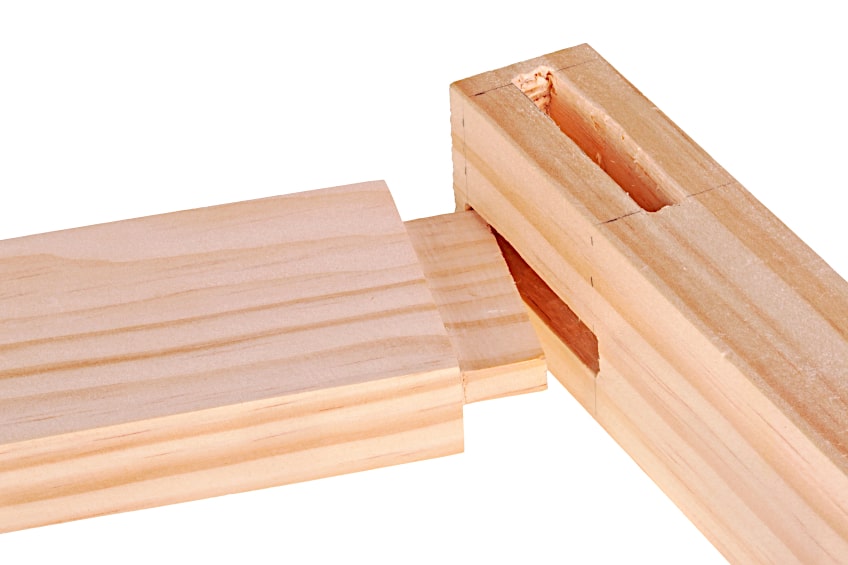
What other reasons could there be for cutting square holes in your workpiece? Well, aside from functional applications square holes can be used for aesthetic reasons as well. Square voids are fairly common on modern minimalist furnishings and provide an air of artistic flair to what would otherwise be pretty dull furnishings.
Aside from wood joints in the classical sense, square holes can also be used to join modular furnishings. Many pieces of modern furniture are sold in two or three parts that join together. This makes them easier to package, and transport, and allows each piece to be used individually or as a whole.
What Do You Need to Cut Square Holes in Wood?
While there are special tools and attachments that can be used to cut a perfectly square hole, there are some basic tools that you will need in order to lay out the design of your square hole, measure the surface that you will be cutting, and you will need something to smooth out the hole once it’s been cut.
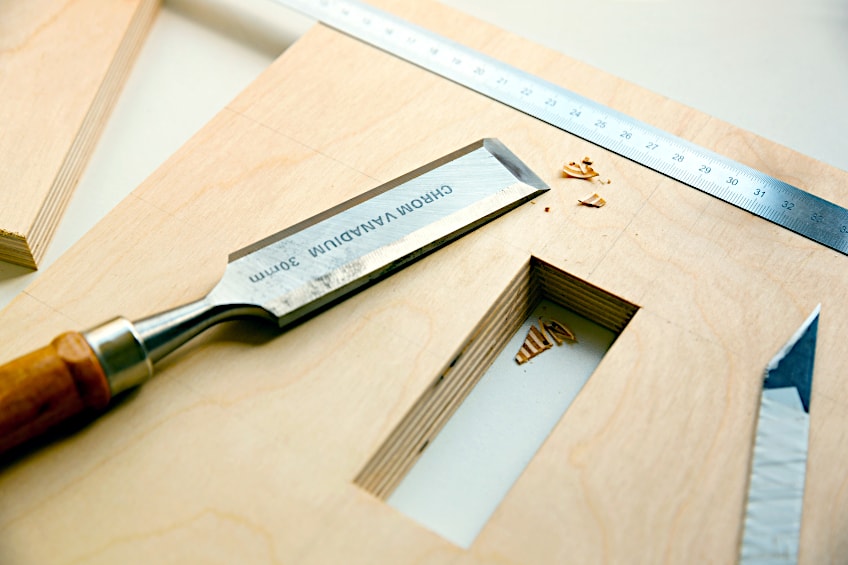
A Pencil
The first thing you’ll need is a pencil to ensure that your hole has been marked and measured. This doesn’t have to be a fancy carpenter’s pencil if you don’t have one; any pencil will do as long as it is capable of marking the surface. We don’t recommend using a pen or chalk if you can avoid it.
Measuring Tape
The next thing you’ll need is a measuring tape to ensure that the dimensions of your holes are true. This is where you’ll need a measuring tape. Any conventional measuring tape will do, as long as you’re able to accurately read the increments on the scale and draw your markings accurately.
A Framing Square or T-Square
While we’re on the topic of accuracy you’ll need something to ensure that your hand doesn’t stray while creating your markings. For this, you can use any framing square or reasonably straight object. While any ruler will do, if it won’t provide the accuracy or that perfect 90-degree angle. Alternatively, we recommend using a T-square.
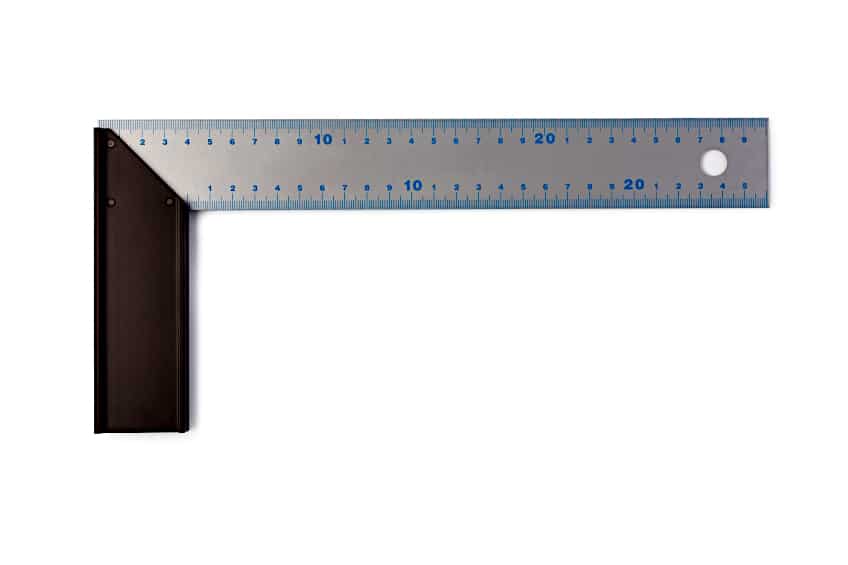
Sandpaper
Finally, you will need something to ensure that the interior of your hole and the surface edges are nice and smooth. The obvious solution to this problem is some sandpaper, and you can choose whichever grain best suits the type of wood you’re working with. Alternatively, you could use multiple grades of sandpaper to ensure a good-looking finish.
How to Cut Square Holes in Wood
Now that you know exactly what you’ll need, it’s time to learn how to cut square holes in wood. Before you get started it’s best to ensure that your workplace is well-ventilated, that your surroundings are protected from stray wood particles, and that you are wearing the appropriate personal protective gear. Now let’s get started!
Marking the Hole
Cutting a square hole is pretty easy, the planning and marking are arguably the most challenging part. To do this you will need to measure the board you’ll be cutting the square hole into using your measuring tape and mark the center with your pencil. This needs to be done regardless of the size of your workpiece, do not try and eyeball it.
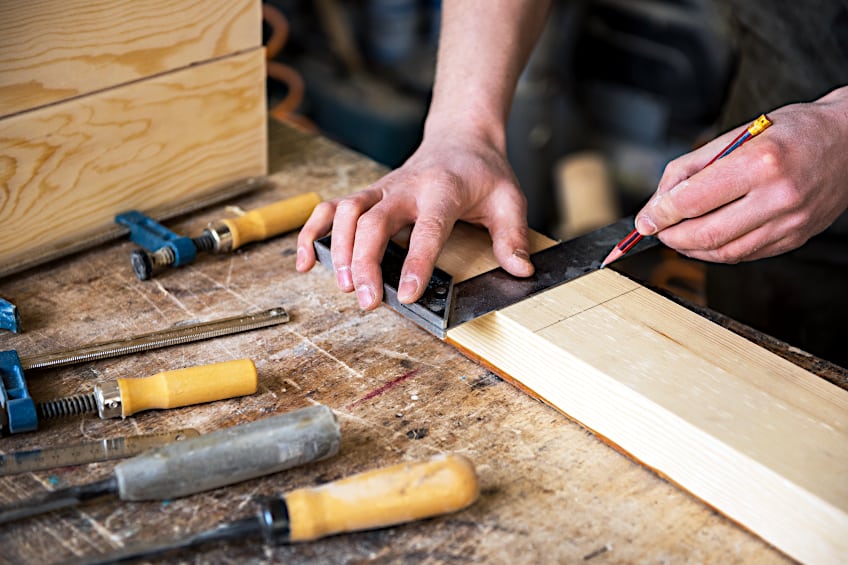
Next, use your framing square to mark the four sides of the square hole you’ll be cutting on the exact spot that you intend to cut it in. Happy with your positioning? Good. To ensure accuracy, use your measuring tape to measure each side of the square and make sure that it is your desired size.
Be as sure as possible when measuring the size and position of your square hole. Remember that unless you have an additional board, you only have one shot at creating your desired hole. Once you’re happy with the measurements you’ve made, ensure that your marking is clearly visible before moving on to the next step in the process.
Drilling Your Pilot Holes
When drilling the pilot holes for your square hole it’s important for you to remember that there are some rules you should follow to ensure that the size and cut of your hole are as accurate as possible. How do you do this? The best thing to do is use a bit that is wider than the width of your cutting blade.
Once you have the right bit for your home, it’s time to drill some pilot holes. Pilot holes will ensure that your blade stays true and does not wander while you’re making the cut. To drill your pilot holes, simply drill holes inside the four corners of the square you marked out earlier and along the lines, ensuring they are straight and equally deep.
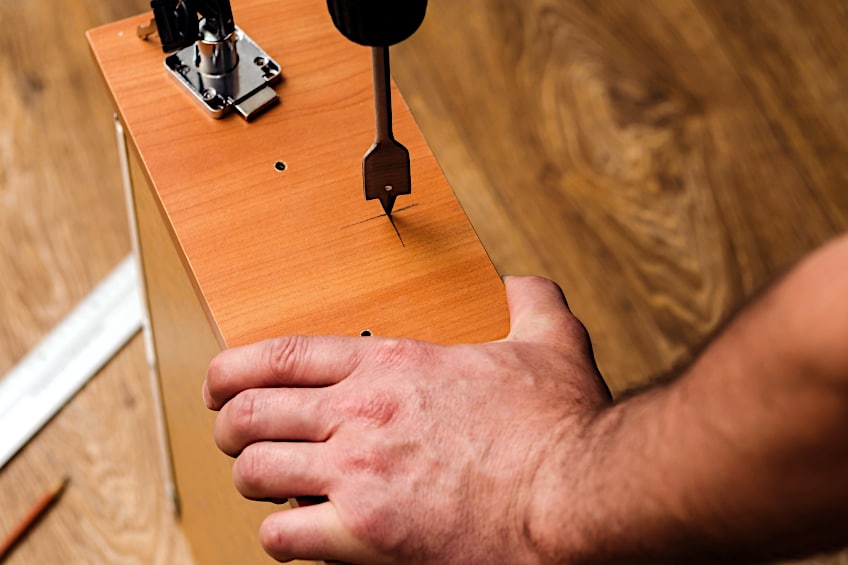
Once your pilot holes have been drilled you need to ensure that the blade you have chosen to use fits the pilot holes. How do you do this? Simply place the blade into the pilot hole to ensure that it is the correct size. Additionally, ensure that the blade is ready for use and that it has not been warped or bent.
The placement of your pilot holes is extremely important. Not only do they ensure that the path your blade takes is accurate, but they will also ensure that the surface of your workpiece is undamaged if the blade does stray a little bit. For this reason, ensure that your holes have been accurately drilled and are sufficiently deep.
Cutting Your Hole
Cutting a square hole is a fairly straightforward process. Before you get started though, you need to choose the right blade for your jigsaw. What is the best blade for cutting a square hole? Well, the best jigsaw blade for cutting wood in general is a blade with a TPI (tooth per inch) of 6 to 10. This will ensure a smooth cut and that your workpiece isn’t ripped apart.
Using a Jigsaw
Now that you have the right blade for the job it’s time for you to get cutting. If you have a Dremel, you can start off by making some scroll lines on the surface of the wood, if you don’t, simply begin cutting. Place the edge of the blade into the pilot hole, and the length of the blade along the penciled line you made earlier.
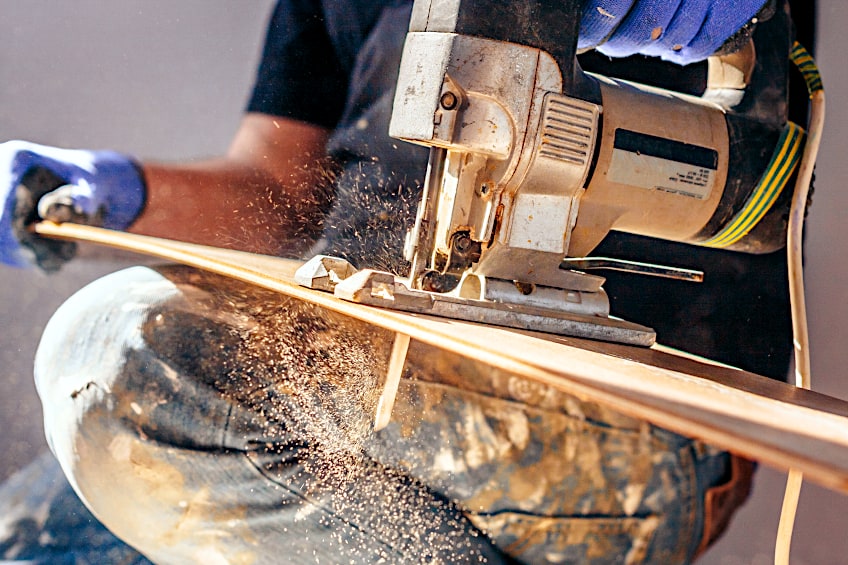
When you begin cutting, ensure that you apply even pressure throughout the process while following your guidelines. Repeat this process until all four lines have been cut, at which point the center material should drop out, leaving you with a nice square hole. Now that your hole is nicely cut, you can choose to smooth out the interior of the hole or leave it as is.
Using a Handsaw or Table Saw
If you’re going to be using and handsaw the same steps for preparing your holes to apply. The method is very much the same as using a jigsaw, with the only difference being that it will take you a bit longer to penetrate the surface of the wood board. Additionally, your pilot holes will have to be a bit larger, and you will have to monitor your angle of approach as you cut. Keyhole saws and fret-saws were designed specifically for this purpose.
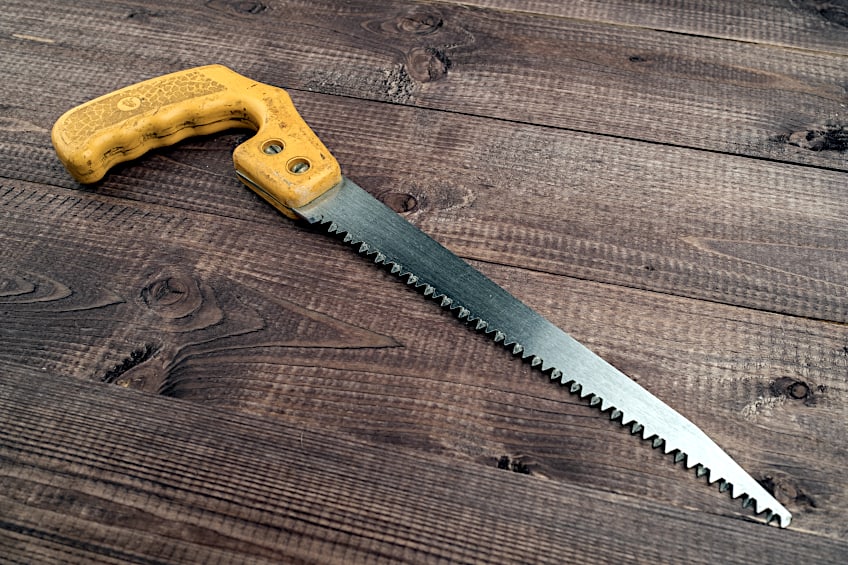
Using a table saw with a miter arm is probably the easiest way for you to cut a square hole into a wooden board. All that you need to do is prepare your board as we detailed above and line it up with the miter arm. Plunge the arm along the penciled line until the hole is cut, lifting up and repositioning the board with each cut until the hole is complete.
Things to Consider
There are some glaring advantages and disadvantages to using each of these saw types. While the handsaw requires more effort, it’s a great alternative and makes far less noise than the table saw. The table saw requires less elbow grease on your part, but it’s not suitable for really large or really small workpieces.
That being said, you will need to have some experience with a handsaw to ensure that your cut is straight, especially when using a saw with a thin blade like a fret-saw. Your hand will be moving back and forth, making it challenging to keep to your lines. It is extremely easy to stray from your intended path while cutting and applying adequate pressure to your saw.
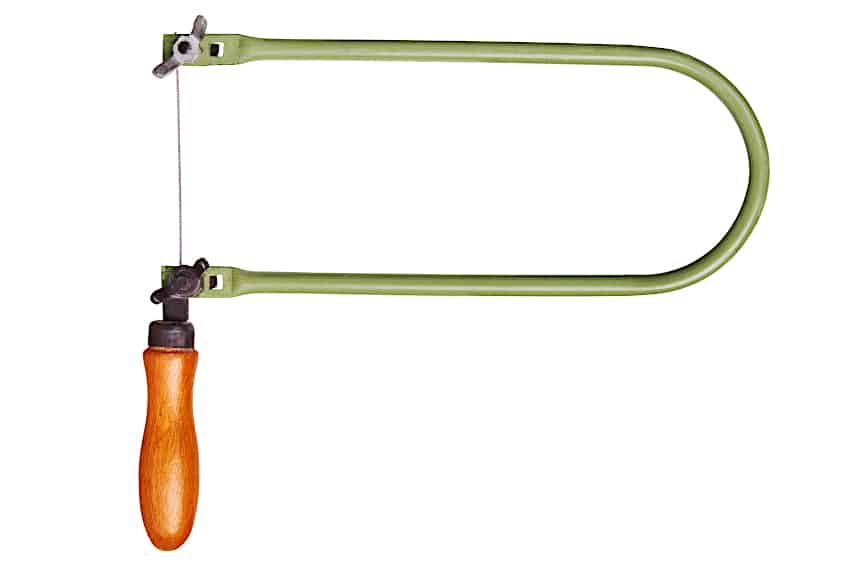
Using the table saw when making square holes in wood is super easy. Since the miter arm can be locked in your preferred position, all that you need to do is plunge the arm and make your cut without having to worry about whether it’s going off-center. Additionally, the bed of the table saw often has a jig that will allow you to secure your workpiece.
Finishing Your Hole
Now that your square hole has been nice and professionally cut, you should dress it up a bit. While this might not be necessary based on the application of your workpiece, it’s always nice to have a good-looking workpiece. That being said, here are a few ways you can finish your square hole and surrounding workpiece.
Sand the Edges of the Hole
Since the cut that you made is primarily internal you will have to ensure that the inside of the cut has been smoothed out adequately. While it might seem tempting to use a power sander to get the job done, if your hole is too small you might not be able to fit one in there. For this reason, we highly recommend you use sandpaper.
Not only is it easier to get some sandpaper into the recess, but it’s much easier to control compared to a power sander. Over-sanding the interior of the hole could result in you widening its diameter, which could render it useless if it’s going to be used for joinery applications.

When sanding the hole ensure that you work slowly and methodically in order to avoid over-sanding. If your workpiece is suspended ensure that you place a tarp or some old newspaper underneath to catch the wood particles if you haven’t already. Feel free to change to higher-grit sandpaper if you aren’t satisfied with the smoothness.
Stain Your Workpiece
While there are many other types of finishes you can go for, if you’re making furniture the chances are that you’re probably looking at some wood stain to finish it off. Wood stain is a great option as it’s easy to use and does not take as long as paint to dry. If you’re going to apply wood stain, ensure that your workspace is well-ventilated.
There are other advantages to wood stain as well. Some of the most notable advantages are that stain doesn’t obscure the grain or texture of the wood, which is ideal if you’ve selected a good-looking wood for your workpiece. Additionally, it darkens the natural color of the wood allowing your workpiece to retain its natural look and feel!
How do you apply wood stain to your workpiece? The easiest way to apply wood stain to your workpiece is to get some on a clean cloth or apply it directly to your workpiece. Next, rub the wood stain into the wood fibers evenly, ensuring there aren’t any blotch sections. Finally, allow the stain to cure and dry for the manufacturer’s recommended time.
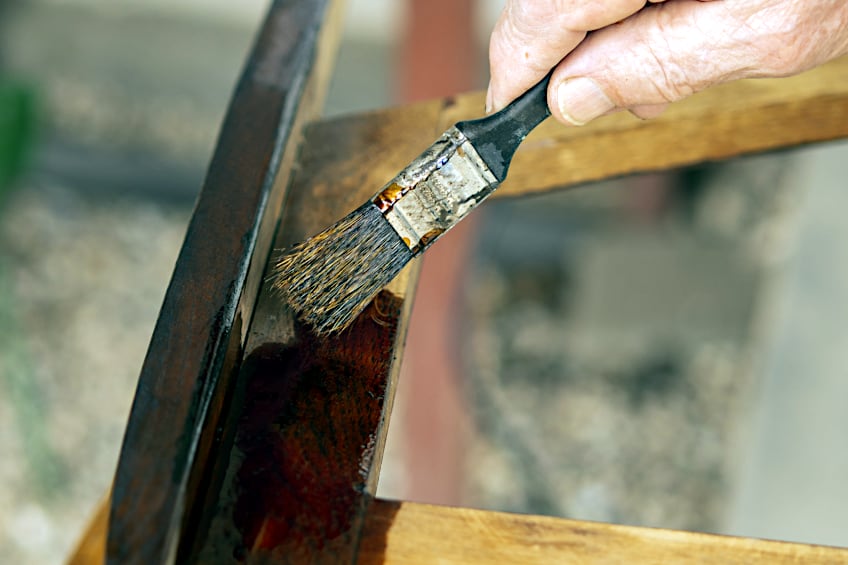
Staining the interior of your square hole might be a bit more challenging, but it’s far from impossible. Simply scrunch up your cloth, get some wood stain on it, and rub the interior of the hole. Don’t over-apply the stain as it could lead to the interior of the hole being darker than the surface of your workpiece.
Advanced Square Hole Cutting
Cutting square holes can be a breeze if you have the right tools at hand. In fact, there are specialized tools that can be used to cut square holes into wooden workpieces. Below, we’ve listed a few tools you could use if you’re going to be cutting square holes quite regularly, or simply if you want to keep the tools around in the event that you ever need them.
Use a Mortising Machine
If you’re going to be punching square holes quite regularly, this could be a worthwhile tool to invest in. How so? The mortising machine resembles a drill press and quite easily punches square holes into multi-layered wood board. If you’re going to be punching these quite often or are starting a wood crafting business, this could be a smart investment.
Use a Square Hole Punch or Chisel
If you’re interested in punching small square holes specifically, you could try a square hole punch instead. These are super useful as they are capable of punching both simple and complex square holes in the blink of an eye. These do have a disadvantage though, as they are incapable of punching through multi-layered boards. To create small square holes in thicker pieces of wood, you will need to go the traditional route and use a chisel.
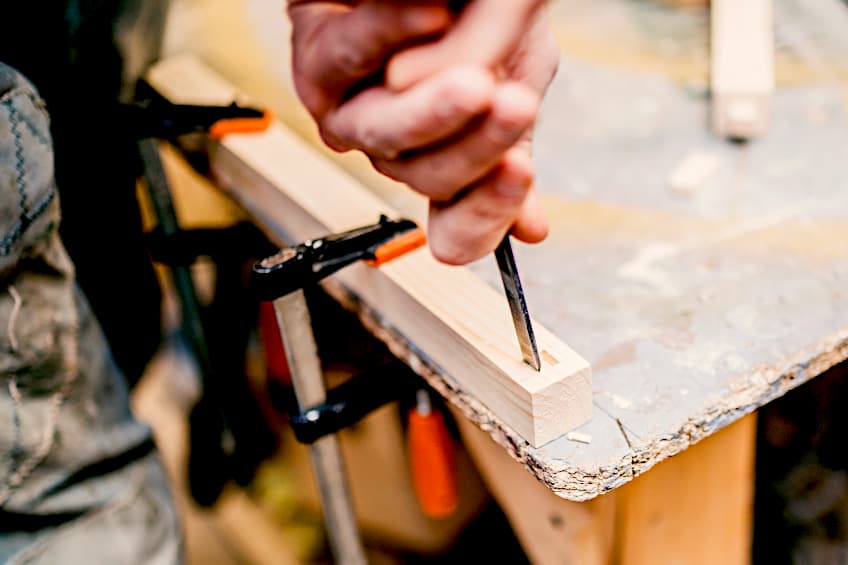
Creating Decorative Square Holes
If your square holes are going to be purely aesthetic, you could use a combination of the mortising machine and the punches. You should be able to punch a variety of square holes by using stand-alone punches and/or a combination of punches. However, you should always ensure that the wood species is capable of being punched with each respective tool.
This is especially true when cutting exotic woods or high-end wood species. Some wood species make cutting holes like these quite challenging, due to their unique rigidity-to-flexibility ratios. Do your best to research the wood species you’re working with to ensure that both your workpiece and tools aren’t damaged.
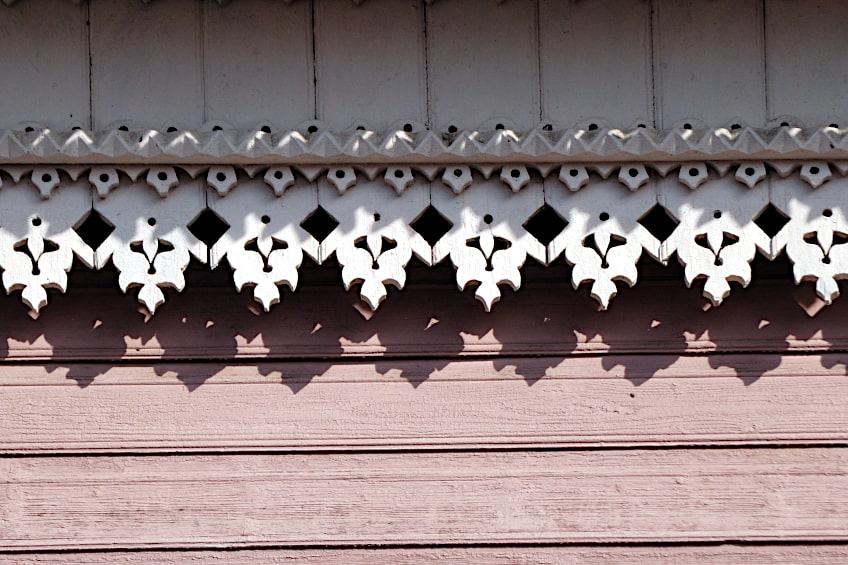
Now that you know why you’d want to place square holes in wood, what you can use to do it, and how to use some of the tools designed for this application, it’s time for you to get out there and put your newfound knowledge to the test! Remember to always wear the appropriate personal protective gear when working with power tools.
Frequently Asked Questions
How Do You Cut Square Holes in Wood?
There are a few ways you can go about cutting square holes in wood. One of the best ways to do this is to use a jigsaw or a table saw. However, if you don’t have either of these, you can cut square holes by hand using a hand saw as well.
What Is the Square Drill Bit Called?
You might have noticed that not all drill bits are round, and if you’re wondering what the square bits are called, they’re known as mortise chisel bits. These bits, as you may have guessed, are used to cut square holes in wood board.
Can You Cut a Square Hole by Hand?
Yes, it is possible to cut square holes in a wood board entirely by hand. You can do so using a chisel, a handsaw, or a drill. Cutting square holes in a solid wood board by hand can be challenging and time-consuming, but can definitely be done with the aforementioned tools.

I have been into woodworking since 2005 and woodturning since 2011. Because of my love for wood and woodworking, I started woodhappen.com to teach other enthusiasts about how to finish and seal wood, the best woodworking tools, the different types of wood, and everything else related to woodworking! Read more about me here.

